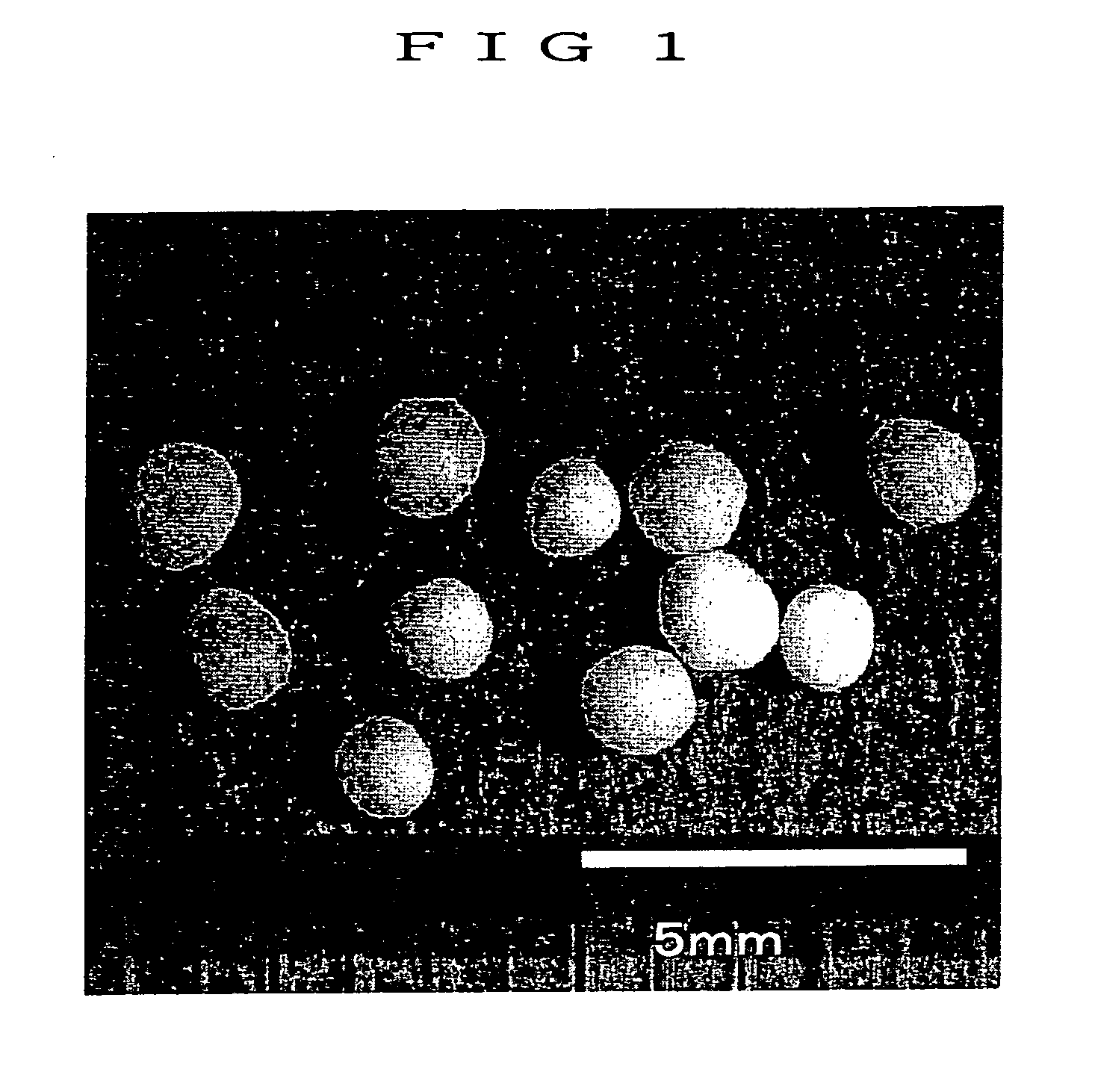Silica-loaded granular rubber and process for producing the same
- Summary
- Abstract
- Description
- Claims
- Application Information
AI Technical Summary
Benefits of technology
Problems solved by technology
Method used
Image
Examples
example 1
[0162] The liquid (A) containing a cocoagulation product of silica and rubber was supplied to a filter press by the aid of a diaphragm pump and filtration was carried out under filtration pressure of 400 kPaG. Next, compression was carried out by using compressed air of 700 kPaG As a result, a water content of the cake was 51% by weight.
[0163] The cake was charged into a hopper equipped with a stirring type dividing machine to effect a primary dividing operation and a secondary dividing operation was then carried out by using a two-shafts screw type dividing machine equipped to the lower part of the hopper, while feeding the divided cake to a drier. At the time of the secondary dividing operation, the divided cake had predominantly a particle diameter of 1 mm or less.
[0164] The drier used was a lateral type internally stirring drier (A) as shown in Table 1, and the drying operation was carried out continuously. The performance of the lateral type internally stirring drier (A) and ...
example 2
[0169] The liquid (C) containing a cocoagulation product of silica and rubber was supplied to a filter press by the aid of a diaphragm pump and filtration was carried out under filtration pressure of 400 kPaG. Next, compression was carried out by using compressed air of 700 kPaG. As a result, a water content of the cake was 60% by weight.
[0170] The dividing and drying operations were carried out in the same manner as described in Example 1. The resultant divided cake had predominantly a particle diameter of 1 mm or less. The temperature just after drying of the resultant silica-filled rubber granules was 105° C. and the water content thereof was 2.0% by weight. Table 4 shows D50, P, sphericity, W and fluidity of the silica-filled rubber granules.
[0171] The resultant silica-filled rubber granules was incorporated with various additives so as to have the proportion as shown in Table 3, and kneaded and vulcanized as in Example 1 to prepare a test piece. The physical properties of the...
example 3
[0173] The liquid (A) containing a cocoagulation product of silica and rubber was supplied to a filter press by the aid of a diaphragm pump and filtration was carried out under filtration pressure of 100 kPaG. Next, compression was carried out by using compressed air of 250 kPaG. As a result, a water content of the cake was 72.5% by weight.
[0174] The cake was easily capable of being divided and supplied continuously to the drier only by the aid of a two-shafts screw type dividing machine.
[0175] The drier comprised of a lateral type internally stirring drier (B) arranged serially after a laterally type internally stirring drier (A) and the drying operation was carried out continuously. The performance o the lateral type internally stirring drier (B) and the drying condition are shown in Tables 1 and 2, respectively.
[0176] The temperature just after drying of the resulting silica-filled rubber granules was 118° C. and the moisture content thereof was 0.9% by weight. Table 4 shows D...
PUM
| Property | Measurement | Unit |
|---|---|---|
| Length | aaaaa | aaaaa |
| Percent by mass | aaaaa | aaaaa |
| Weight ratio | aaaaa | aaaaa |
Abstract
Description
Claims
Application Information
 Login to View More
Login to View More - R&D
- Intellectual Property
- Life Sciences
- Materials
- Tech Scout
- Unparalleled Data Quality
- Higher Quality Content
- 60% Fewer Hallucinations
Browse by: Latest US Patents, China's latest patents, Technical Efficacy Thesaurus, Application Domain, Technology Topic, Popular Technical Reports.
© 2025 PatSnap. All rights reserved.Legal|Privacy policy|Modern Slavery Act Transparency Statement|Sitemap|About US| Contact US: help@patsnap.com

